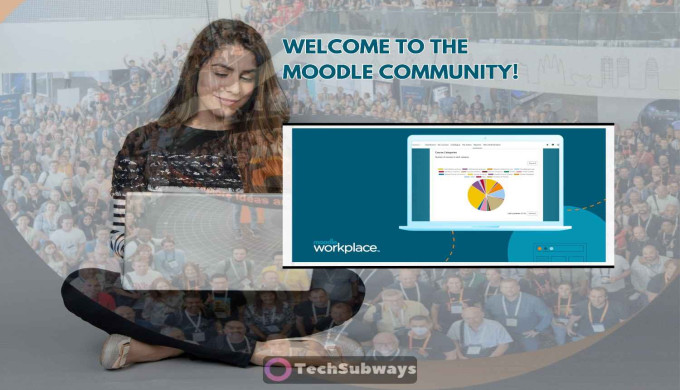
Moodle has gradually established itself as a top Learning Management System (LMS) for EdTech excellence in the educational sector. As educational institutions seek comprehensive learning management systems (LMS), the flexible and scalable solutions provided by moodle have become a leading force in the world of educational technology.
With open-source nature of moodle, educators and students can obtain the customizable functionality needed to thrive in virtual environments while the demand for digital learning continues to accelerate.
Learning institutions today need to choose appropriate LMS solutions that cover curriculum delivery as well as student engagement and accurate assessments and long-term learning achievements in a hybrid and remote-first educational environment. Moodle differentiates itself by delivering these requirements through innovative solutions, community engagement and accessibility standards.
Moodle rje presents customized learning environments which demonstrate moodle`s ability to serve specialized learning settings.
The moodle rje implementation represents a specialized moodle solution that demonstrates the system`s flexibility in tailored educational environments. Moodle rje is particularly useful for technical and vocational education because it allows the combination of external job scheduling and lab simulations in one cohesive platform.
Moodle rje offers a perfect solution for institutions dedicated to technical education which requires real-time interactive learning to develop skills. The feature enables moodle to evolve from an ordinary content portal into a dynamic skills lab by permitting the execution of server-based operations and simulation runs.
Institutions choose moodle because it effectively handles the distribution of moodle courses across different fields of study. The platform offers synchronous and asynchronous along with blended and self-paced learning modalities which serve K-12, higher education, and corporate training sectors.
Moodle courses provide adaptable learning environments that enable educators to create tailored educational approaches which meet student needs and achieve institutional objectives. Educators can link moodle to external resources like Zoom, Google Workspace, or Turnitin through LTI integrations to enhance learning experiences.
The moodle start stop times timestamp provides administrators and instructors with accurate student engagement measurement capabilities.
The moodle start stop times timestamp function enables administrators to track student activity through precise time metrics. The timestamp tool automatically records user session times when users begin and finish their platform activities.
Educators along with administrators will use moodle start stop times timestamp data to develop improved interventions which help at-risk learners better. The system allows students to evaluate their learning patterns and develop stronger time management skills.
Moodle umass demonstrates how the University of Massachusetts successfully implements moodle as a large-scale platform for educational delivery. The moodle umass case demonstrates how moodle proves its ability to scale up while maintaining effectiveness across extensive academic networks.
The moodle umass model demonstrates an LMS implementation that goes beyond conventional teaching to achieve broader institutional goals. The community-driven open-source development ethos of moodle becomes evident through this example.
The reputation of moodle rests upon the principles of EEAT (Expertise, Experience, Authoritativeness, and Trustworthiness), which is vital for EdTech platforms to succeed in academic settings.
Moodle continues to be the leading choice for educational institutions because of its credibility.
The users who search for “moodle” display different search intent patterns through the lens of search engine optimization.
Users who visit the website for login portals and institutional access fall into the navigational category (e.g., “moodle umass login”). Users who navigate to the site for research about platform capabilities and configurations demonstrate this intent (e.g., “how to track activity in moodle”). Educational institutions examine potential Learning Management Systems when making their decisions (e.g., “moodle vs Blackboard comparison”). The content structure of user guides and case studies and course showcases should be designed to meet specific queries and enhance discoverability through this understanding of intent.
The implementation of LSI terms in moodle content helps improve visibility through organic traffic growth.
The use of LSI terms in moodle content provides increased relevance to search engines and enhances organic traffic. The terms “learning management system” together with “course builder” and “open-source LMS” and “student analytics” and “virtual classroom tools” and “blended learning” enable moodle to establish its position in the EdTech ecosystem.
The implementation of LSI terms enhances the contextual depth of your content and enables algorithms to understand better how topics relate to each other. This results in enhanced search positions which generates greater user interaction.
The numerous LMS platforms available have their own strengths but moodle stands out through its distinctive features.
The moodle system delivers its best features through its ability to adapt to any course requirements so users can implement gamification elements and timestamp tracking and external simulation connections through moodle rje within one platform.
Moodle already demonstrates readiness for upcoming educational technology innovations as digital learning continues to develop.
Moodle sets the benchmark for educational platforms because it continues to keep pace with the development of access and data and customization needs in educational technology.